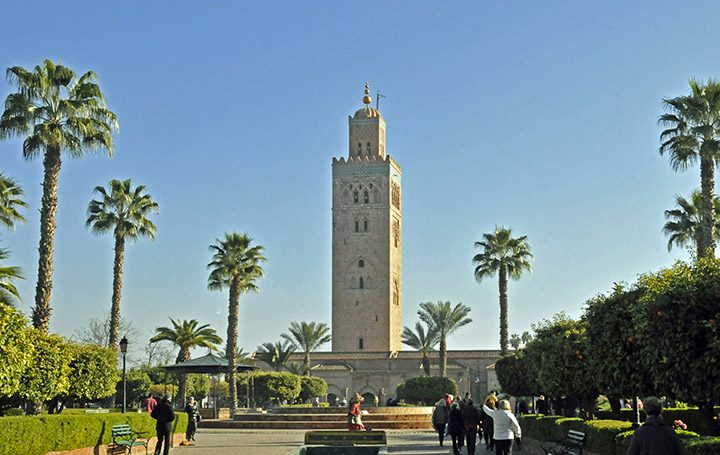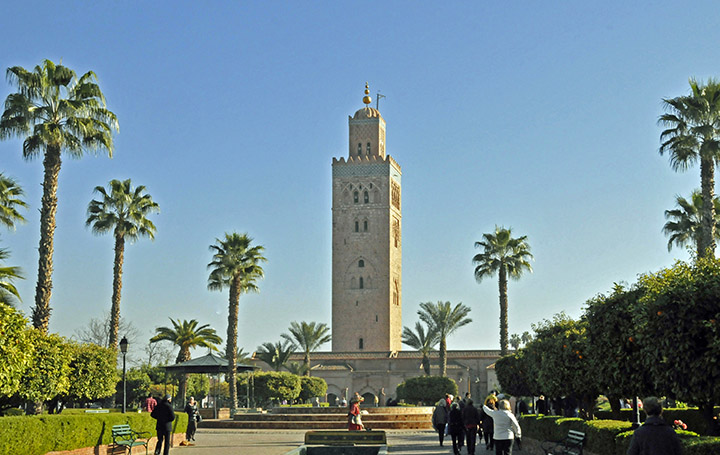
Commentary by Don Knebel
A distinctive minaret in Marrakesh, Morocco, demonstrates the lasting influence of 12th century Islamic architecture. Its name reflects the lasting influence of 12th century Islamic learning.
Marrakesh was founded in 1062 by the Almoravids as the capital of an Islamic empire comprising southern Spain and northwest Africa. In 1147, the Almohads, practicing a more severe form of Islam, conquered Marrakesh and destroyed its mosque. By the end of the 12th century, the Almohads, led by Yaqub Al-Mansur, had completed a new mosque on the site of a destroyed Almoravid palace. The most famous feature of what became known as the Koutoubia Mosque is its 253-foot-tall sandstone minaret. A wide ramp inside the square minaret enabled the muezzin to ride his horse to the balcony to announce prayer time. The minaret is topped by four gilded copper balls extending from a dome. An improbable legend says the fourth ball was created from the jewelry of the Al-Mansur’s wife, taken from her as penance for breaking her Ramadan fast. The distinctive design of the minaret was copied for Almohad mosques in Seville, which later became the bell tower of the Seville Cathedral, and in Rabat, which was never completed. Twin towers of the state historical museum on Moscow’s Red Square mimic the Marrakesh minaret.
The word “Koutoubia” remembers the dozens of book sellers who once plied their trade at the base of the minaret. In the 12th century, when much of Christian Europe was still intellectually asleep, Islamic Marrakesh was an important center of learning. One of the residents of Marrakesh at the time was Averroes, the Spanish genius born in Cordoba in 1126. Averroes’ commentaries on the works of Aristotle, which had been forgotten in the West, were taken back to Europe by visiting scholars, where they eventually formed some of the foundations of the Renaissance.



